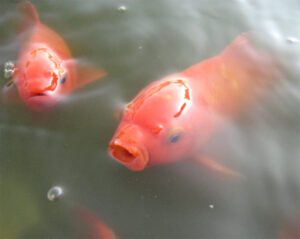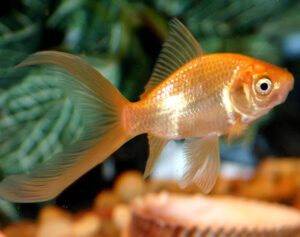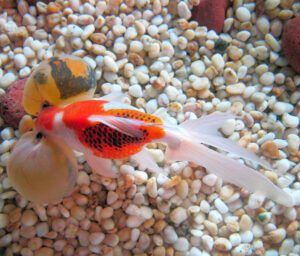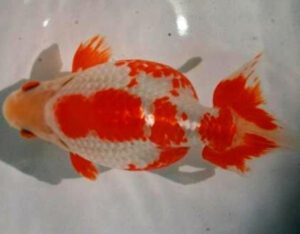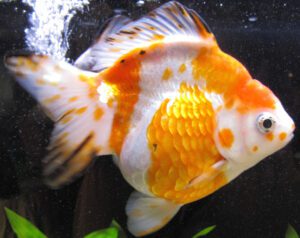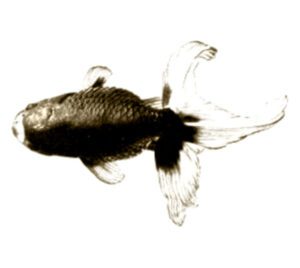The Ranchu goldfish is a very beautiful fish and highly regarded fancy goldfish variety in Japan. It was actually originated in China and was further developed in Japan in the late 1800s.
Currently it is available and is popular throughout the world. It is also known as the Buffalo-head Goldfish, especially in Asia.
The Ranchu goldfish are much prized in Asia. And they are bred for highly competitive shows in Asia. They are judged from the side in Chinese shows.
But they are placed in shallow bowls and judged from the top in Japanese shows. However, read some more information about this goldfish variety below.
Ranchu Goldfish Characteristics
The Ranchu goldfish have and egg-shaped body with a deep belly that is between 5/8 to 3/4 the length of the fish. They have a highly curved back, and other distinctive feature is their head.
Their head can become completely covered with fleshy growth except for the eyes, mouth and nostrils.
The amount of head growth differs for each fish, some can have so much growth that their vision is impeded while others may develop much less growth.
The Ranchu goldfish generally don’t have a dorsal fin and breeding standards require that the back should not have any vestiges of the dorsal fin on it.
Their back is generally rounded and not flat. The area of the caudal peduncle should curve sharply downwards to meet the tail.
In case of coloration, the Ranchu goldfish may come in red, orange, white, red-and-white, blue, black, black-and-red, black-and-white and chocolate.
The scalation may either be metallic, nacreous or matte. And fish with a pale-yellow bodies and bright red heads are rare.
The mature Ranchu goldfish can reach between 6 and 8 inches body length. Photo and info from Wikipedia.
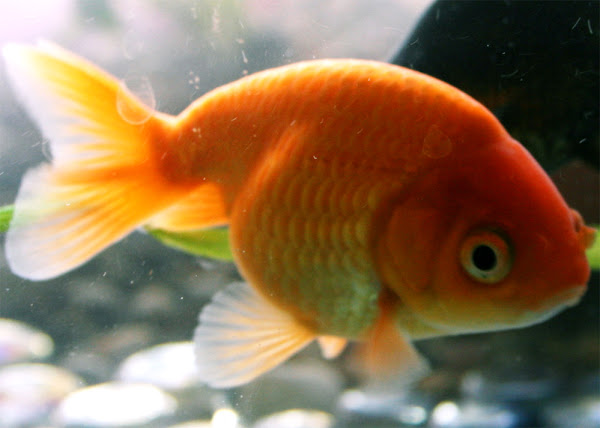
Diet
The Ranchu goldfish are omnivorous and they generally eat all kinds of fresh, frozen and flake foods.
Generally it is good to feed the fish with freeze-dried foods as opposed to live foods to avoid parasites and bacterial infection that could be present in live foods.
Breeding
The Ranchu goldfish spawn readily in the right conditions. The females can lay as much as 10,000 eggs per spawning, and the spawning can last for 2 to 3 hours.
Both males and females can start eating as many eggs as they can find. So removing the parents after completing spawning is best.
Uses
The Ranchu goldfish are ornamental fish. They are raised mainly for ornamental purpose and used as pets.
Special Notes
The Ranchu goldfish require special care. They need to be kept in a well-maintained tank with plenty of space and a proper diet. They are very social fish and generally thrive in community.
But they are also great scavengers. Their swimming ability is encumbered by their rounded body and further diminished by the lack of a stabilizing dorsal fin.
This is a trait that is also seen in the Lionhead, Bubble Eye, and Celestial Eye Goldfish.
Currently this goldfish variety is popular and available throughout the world. And it is raised for ornamental purpose. However, review full breed profile of these fish in the following table.
| Name | Ranchu Goldfish |
| Other Names | Also known as Buffalo-head Goldfish |
| Breed Purpose | Ornamental, pet |
| Special Notes | Very beautiful, distinctive look, caring is pretty difficult, require very special care, very social fish and generally thrive in community, great scavengers, popular and available throughout the world, raised for ornamental purpose |
| Size | Between 6 and 8 inches |
| Breeding Method | Artificial |
| Climate Tolerance | Almost all climates |
| Body Color | Many (red, orange, white, red-and-white, blue, black, black-and-red, black-and-white and chocolate) |
| Rarity | Common |
| Availability | Worldwide |

